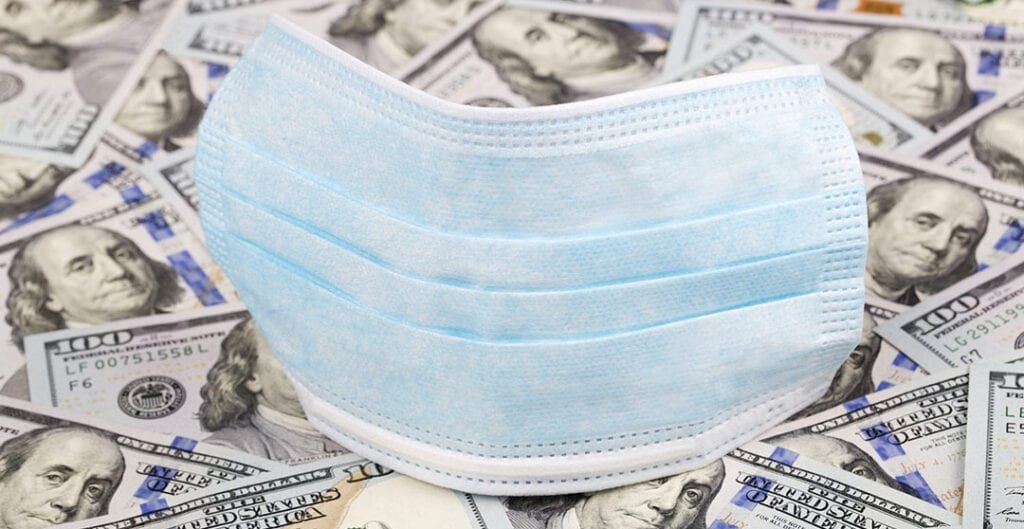
The COVID-19 pandemic is still ongoing. There are over 733,000 deaths as of writing, over 900 times more than the SARS outbreak of 2003.
I have compiled a table of comparison below for easier reference, so businessmen and policy makers may learn from history.
| Spanish Flu | SARS | COVID19 | |
| What is it? | A group of three genes enabled the virus to weaken a victim’s bronchial tubes and lungs and clear the way for bacterial pneumonia. | Severe Acute Respiratory Syndrome (SARS) is an airborne respiratory illness caused by the coronavirus. | A novel strain of coronavirus that can cause respiratory tract infection |
| When did it start? | First appeared in Feb 1918, unsure if really began in Kansas, USA | First appeared in Nov 2002 in Guangdong, China | First appeared in December 2019 in Wuhan, China |
| Estimated Number of People Infected | 1/3 in the world, about 500 million | 8,096 from 29 countries | 20 million (as of Aug. 10, 2020) 213 countries |
| Estimated Number of Deaths | 10% of patients, as many as 50 million (3% of world’s population) 2nd of 4 waves much deadlier than the first wave | 774 | 733,186 deaths (as of Aug. 10, 2020) |
| Profile of Highest Mortality Risk | 18 – 44 years old, more Males than Females, more individuals with the strongest immune systems than those with weaker immune system, Higher risks for those affected with malnourishment, poor hygiene, those living in overcrowded spaces, with pre-existing tuberculosis and pregnant women. | 60 years old and older, more Males than Females. Higher risks for people with diabetes, heart disease, cancer, lung, asthma, pneumonia, respiratory problems, and smokers. | 60 years and older, more Male than Females. Higher risks for people with chronic kidney or liver disease, hypertension, obesity, dementia, weak immune system, diabetes, heart disease, cancer, lung, asthma, pneumonia, respiratory problems, smokers, and pregnant. |
| When did it end? | April 1920 | July 2003 | Ongoing |
| Key Political Event in History | World War 1 | US-British coalition launched war against Iraq | UK withdraws from European Union |
| When Vaccines Were Discovered | 1945 | When the pandemic was already ending | Over 165 under development, none approved, 27 in clinical trial, 6 vaccines (3 from China) is already in Phase 3 final testing, likely available in early 2021 if successful |
| Years It Took Economy to Recover | 1923 (5 years) in US | China: Economy bounced back quickly although growth slowed to 3.2% in Q2 2003. Hong Kong: GDP negative growth 4.75% Q2 2003, but economy bounced back quickly, growing overall in 2003. | Recession in most countries USA: Q2 GDP shrank 33% (minus 9.5% of GDP) Philippines: Q2 GDP shrank minus 16.5% China: Q2 grew +3.2% GDP (from Q1 minus 6.8% GDP) |
| Peak Unemployment | US: 11.7% | HK: 8.7% | US: 55 million filed for unemployment insurance (as of Aug. 1, 2020) = 33% of labor force (higher than the 37 million in the US recession of 2008 of 25% of labor force) |
| How to Avoid Adverse Economic Effect and Accelerate Economic Growth After Pandemic (Lower mortality rates and better economic outcomes after pandemic) | Early and extensive Non-Pharmaceutical Interventions (NPI) such as social distancing, face mask, closing of entertainment services, quarantine (Michigan, Minnesota and Wisconsin had the lowest mortality rates in the US, while Pennsylvania, Maryland and Colorado had the highest mortality rates) | Fever check, contact tracing, quarantine of close contacts, fever clinics, special training and use of personal protection equipment (PPE) including masks, goggles and gowns, closure of public entertainment, cluster of patients in designated wards and hospitals. | Preventive, decisive and vigilant measures to protect countrymen like early suspension of flights from Wuhan, China, temperature screening, testing, strict quarantine requirement,, contact tracing, public health campaigns (wash hands frequently), limiting public events and non-essential businesses, targeted lockdown, with medical basis. |
| Economic Turnaround | US: Farm tariff, tax cuts, value chain benefits of cars to highway constructions to service industries (hotels, restaurants, etc.) plus massive electrification. | HK: China issued individual visit visa for Chinese in Mainland to visit Hong Kong and Macau starting July 28, 2003. Some 450,000 individual visas were issued in the first 3 months (2 million first 10 months) | Stimulus as % of GDP Japan 21.1% Canada 15% USA 13.2% Brazil 11.8% Australia 10.6% Germany 8.9% China 7% India 6.9% France 5% Italy 4.9% Indonesia 4.4% (source: Statista, June, 2020) Philippines: possibly 10% of GDP if approved (2019 GDP = nearly US$357B) China = 7% (Please see below) |
What insights can we take with us? For instance:
- The Spanish Flu of 1918 had a deadly second wave, so those who have prevented a COVID-19 pandemic in their own countries should continue to be vigilant.
- China supported Hong Kong with 2 million holiday tourists from China within the first ten months after the SARS outbreak. Previously, only those with business visas and group tours had been allowed to travel to Hong Kong. This helped Hong Kong recover so quickly in 2003.
- China’s economy bounced back in the second quarter of 2020, registering 3.2% positive growth (but lower than previous growth rate). They have aggressively pursued saving their people from COVID-19, saving entrepreneurs from bankruptcy, as well as saving workers from unemployment. Below is a more elaborate but partial list, as COVID-19 economic recovery stimulus is a work-in-progress for all countries at the moment.
- Postponement of income taxes of SMEs and the self-employed, to be paid in 2021
- Average 5% discount on electricity and 15% discount on internet (Feb to June 2020)
- Cut interest rates and ensured credit availability through purchasing 40% of unsecured loans made to SMEs from some local banks
- Vat-exemptions for services like restaurants, hotels, tourism and entertainment ventures (including movies) and carry over loss up to 8 years and vat-exemptions for virus control companies (Jan-Mar 2020)
- Launch of various infrastructure bonds
- 200% increase in temporary monthly allowance for low-income families (March to June 2020)


